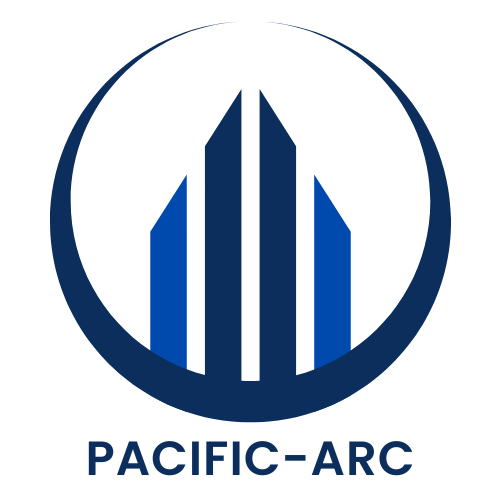Investing in property can feel like trying to solve a Rubik’s Cube blindfolded. With so many moving parts it’s easy to get lost in the numbers. One of the biggest puzzles? The down payment. How much should one really set aside to snag that dream investment property without breaking the bank or their sanity?
Typically, aspiring investors might think they need to cough up a hefty chunk of change. But fear not! The world of real estate offers various options that can make it more accessible than a Netflix binge. From traditional loans to creative financing strategies, understanding the down payment landscape can turn that daunting task into a strategic game plan. Let’s dive into the nitty-gritty so investors can confidently step onto the property ladder without tripping over their wallets.
Table of Contents
ToggleUnderstanding Down Payments
Navigating the world of down payments is crucial for investment property endeavors. Investors should grasp the significance and structure of these payments to make informed decisions.
What Is a Down Payment?
A down payment refers to the initial payment made when purchasing an investment property. It represents a percentage of the total property price. Generally, this upfront amount reduces the total loan amount needed. For most investment properties, down payments typically range from 15% to 25%. However, some lenders may accept lower percentages, depending on the financing type and the borrower’s creditworthiness.
Importance of Down Payments for Investment Properties
Down payments play a vital role in financing investment properties. They lower the amount borrowed, resulting in reduced monthly payments. Higher down payments can also lead to better interest rates and more favorable loan terms. With a substantial down payment, investors demonstrate financial commitment and responsibility, increasing their appeal to lenders. Down payments establish equity in the property, offering investors potential returns when the property appreciates in value.
Typical Down Payment Amounts

Determining down payment amounts for investment properties varies based on financing options and investor profiles. Understanding common rates offers valuable insights.
Standard Down Payment Rates
Standard down payments commonly range from 15% to 25% of the total property price. Lenders often require at least 20% for conventional loans, reducing private mortgage insurance costs. Some programs may allow lower payments, between 5% and 15%, especially for first-time investors. Thus, investing in multifamily properties may necessitate higher down payments. Specific properties, like vacation rentals, also attract different requirements due to their investment nature. Knowing these rates helps investors tailor their budgets effectively.
Factors Influencing Down Payment Requirements
Lenders assess several factors that influence down payment requirements. Property type plays a significant role, with commercial properties often needing larger payments. Investor credit scores significantly affect acceptable rates; higher scores generally result in lower down payments. Loan types also vary in requirements; government-backed loans may offer more flexibility. Investment property location impacts down payments since markets with high demand tend to have stricter lending criteria. Understanding these factors aids investors in preparing financially for property purchases.
Financing Options for Investment Properties
Investing in property involves various financing options that can accommodate different financial situations. Understanding these options helps investors select the right path for their investment goals.
Conventional Loans
Conventional loans are often a popular choice for investment properties. These loans typically require a down payment of 15% to 25%, depending on the property type and lender requirements. Accessing competitive interest rates and favorable terms is possible with a strong credit score. Many lenders prefer a minimum credit score of 620 for approval. Such loans provide clear advantages, but they may come with higher down payment expectations, primarily if it’s a second home or rental property. Investors appreciating conventional loans can enjoy a streamlined process and potentially lower monthly payments with a substantial initial investment.
FHA Loans for Investment Properties
FHA loans offer a unique option for investors, allowing a lower down payment of about 3.5%. However, these loans apply mainly to owner-occupied properties, which may limit investment opportunities. Qualifying for an FHA loan requires meeting specific guidelines, including a credit score of at least 580. These loans help first-time investors access real estate markets more easily. Although the down payment is lower, acquiring an FHA loan might involve additional costs like mortgage insurance. Investors considering FHA loans need to weigh the benefits against the restrictions on property use.
Strategies for Affording a Down Payment
Investors can employ several strategies to help afford a down payment on an investment property. These methods simplify the path to ownership, enabling better financial management.
Saving for a Down Payment
Creating a dedicated savings plan can significantly aid in accumulating the necessary funds. Setting a specific goal helps focus on the amount needed for the down payment. Automating monthly transfers into a savings account enhances consistency in saving. Allocating any bonuses or tax refunds can expedite the savings process, while cutting unnecessary expenses increases contributions. Investors often find that even small, regular deposits add up over time.
Utilizing Grants and Assistance Programs
Local and national programs offer grants designed for prospective investors. Researching available resources can yield financial assistance tailored for down payments. Some initiatives specifically target first-time buyers, providing significant funds to ease upfront costs. Government programs may include favorable terms, such as low or no interest on loans. Various nonprofit organizations also extend aid, emphasizing the importance of knowing what options are available in specific regions. Investors should regularly check their eligibility for these resources, as they can significantly reduce financial burden.
Navigating the down payment process for investment properties can feel overwhelming. However with the right strategies and resources investors can make informed decisions that align with their financial goals. Understanding the typical down payment ranges and available financing options empowers investors to approach property ownership with confidence.
By exploring various funding avenues and creating a solid savings plan investors can significantly reduce their upfront costs. This proactive approach not only eases the financial burden but also positions them for long-term success in the real estate market. With careful planning and research anyone can turn their investment dreams into reality.





